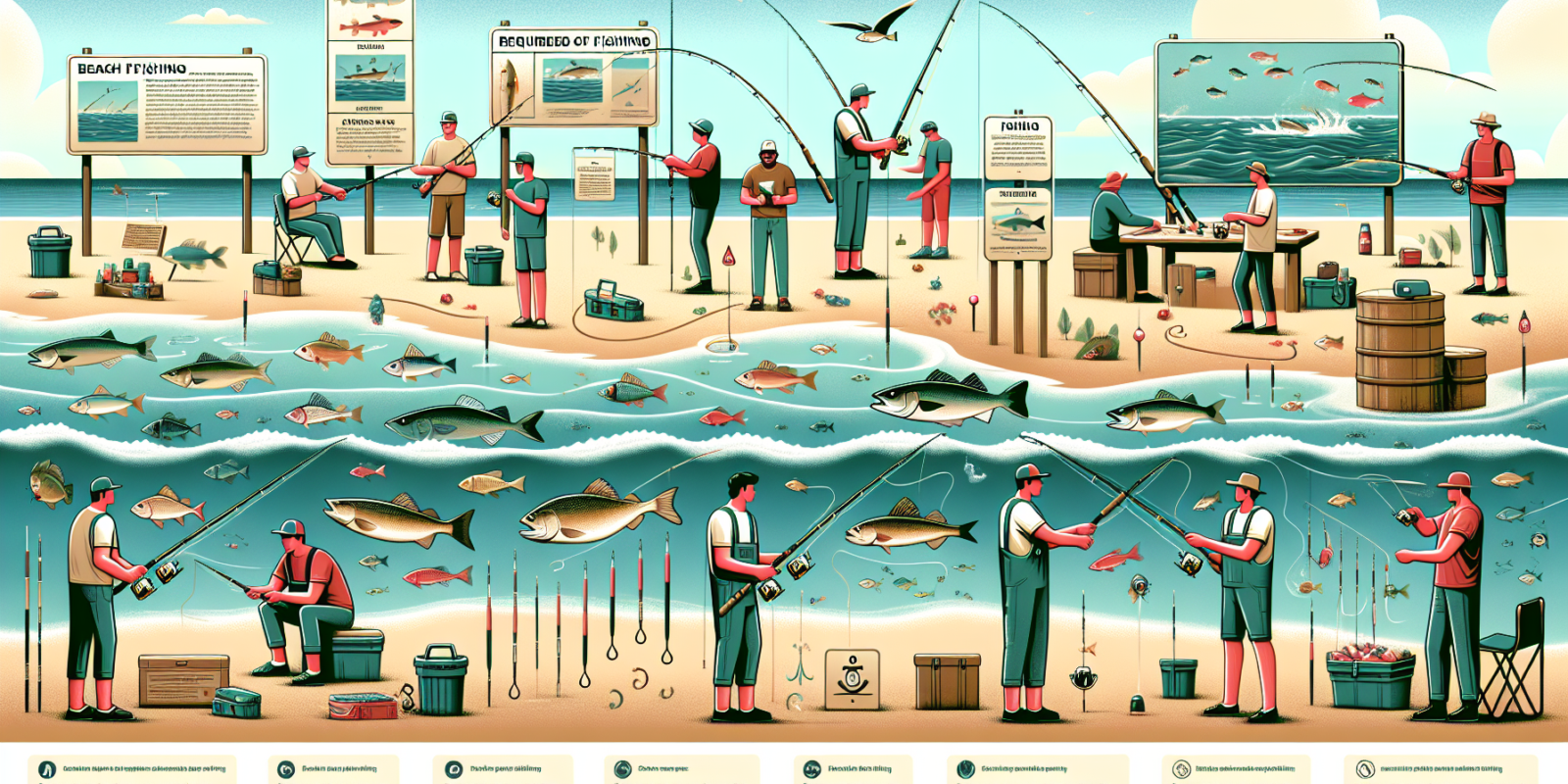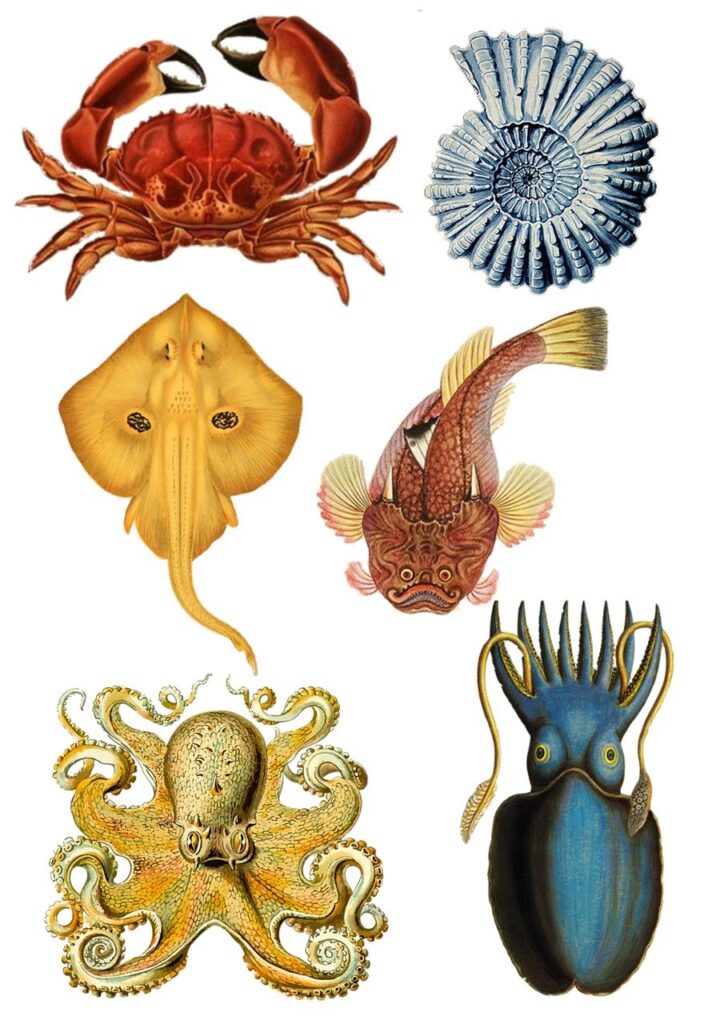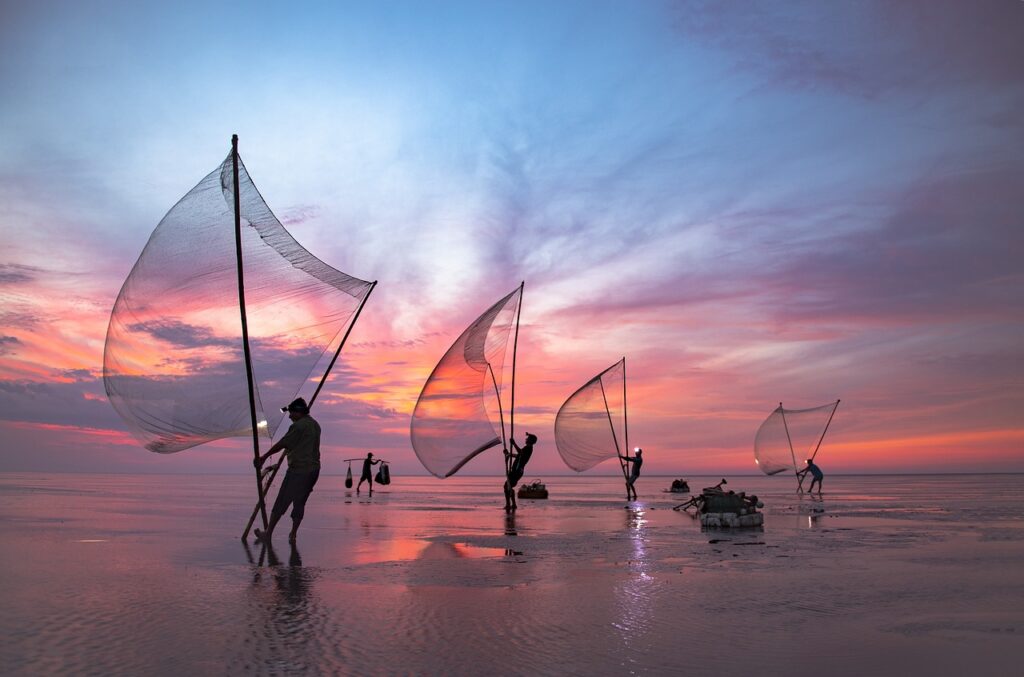Your cart is currently empty!

Can I Go Fishing At The Beach?
If you’ve ever wondered whether you can indulge in your love for fishing while enjoying the sun, sand, and surf at the beach, we’ve got some good news for you. The answer to your burning question is a resounding yes! Fishing at the beach is not only possible but also a fantastic way to unwind and connect with nature. In this article, we’ll explore the ins and outs of beach fishing, from the excitement of casting your line to the thrill of reeling in your catch. So pack your fishing gear, grab your sunscreen, and get ready for a relaxing day by the water while you reel in some unforgettable memories.
What are the fishing regulations at the beach?
Fishing licenses
Before you cast your line at the beach, it’s essential to check the fishing regulations in your area. Many beach locations require a fishing license, which can be obtained through the local fishing authorities or online. Make sure to familiarize yourself with the specific regulations regarding license requirements, fees, and any additional permits that may be needed.
Permitted fishing areas
Different beaches have different regulations on where fishing is allowed. Some beaches may have designated fishing areas where you are permitted to fish, while others may have restrictions in place to protect certain habitats or wildlife. It’s crucial to be aware of these permitted fishing areas and respect any signs or guidelines that indicate where fishing is permitted.
Fishing seasons
There may also be specific fishing seasons at the beach for certain species to protect their populations during spawning or migration periods. It’s important to acquaint yourself with the fishing seasons for the particular fish you’re interested in catching. This will ensure you’re fishing responsibly and adhering to sustainable fishing practices.
What types of fish can be caught at the beach?
Common fish species
Beach fishing offers a diverse range of fish species that can be caught. Some common fish species you might encounter while fishing at the beach include striped bass, flounder, black drum, redfish, snook, and pompano. These species are known for their abundance and are highly sought after by anglers of all levels of experience.
Rare or unique fish species
Depending on the location and time of year, you may also encounter rare or unique fish species while beach fishing. These include species such as tarpon, cobia, sheepshead, snapper, and Spanish mackerel. The thrill of potentially catching these elusive fish adds an exciting element to beach fishing and keeps anglers coming back for more.

What equipment do I need for beach fishing?
Fishing rods
When it comes to beach fishing, having the right equipment is crucial. A long, sturdy fishing rod is a must-have for casting your line far out into the surf. Opt for a fishing rod specifically designed for saltwater conditions, as they are more durable and resistant to corrosion. Depending on the species you’re targeting, choose a rod with the appropriate power and action to handle the size and fighting strength of the fish.
Fishing reels
A high-quality fishing reel is essential for beach fishing. Spinning reels are commonly used due to their versatility and ease of use for casting and reeling in fish. Look for a reel with a smooth drag system and a good line capacity to handle the potential runs and fights that saltwater fish are known for.
Fishing tackle
To successfully catch fish at the beach, you’ll need a variety of fishing tackle. This includes hooks, sinkers, swivels, and leaders. It’s recommended to have a selection of different size hooks and sinkers to adapt to the conditions and target species. Additionally, having a selection of swivels and leaders will assist in preventing line twists and abrasion from the fish’s sharp teeth.
Bait
Choosing the right bait is essential for attracting fish while beach fishing. Live bait, such as shrimp, sand fleas, or finger mullet, can be highly effective in enticing a wide range of saltwater fish. Alternatively, artificial baits, such as soft plastic lures or spoons, can also be successful in imitating the movement of natural prey. Experiment with different baits to see what works best for the fish species you’re targeting.
What are the best fishing techniques for the beach?
Surfcasting
Surfcasting is a popular technique for beach fishing, particularly when targeting fish that inhabit the surf zone. This technique involves casting your bait or lure beyond the breaking waves and allowing it to drift naturally in the current. The key to successful surfcasting is mastering the art of long-distance casting and reading the water for potential fishing hotspots.
Bottom fishing
Bottom fishing is another effective technique for beach fishing, especially when targeting fish species that feed close to the ocean floor. For bottom fishing, you’ll want to use a sinker to keep your bait on or near the seabed. This technique works well for species like flounder, snapper, and black drum, as they often search for food in these areas.
Pier fishing
If you’re fishing from a pier at the beach, pier fishing techniques come into play. This involves casting your line off the pier and allowing it to sink to various depths. Pier fishing often provides access to deeper water and can yield great results for various fish species. Additionally, fishing from a pier offers the advantage of having a stable platform and potentially accessing spots that are further from the shore.

What are the safety considerations for beach fishing?
Knowledge of tides and currents
Before embarking on a beach fishing adventure, it’s vital to have a good understanding of the tides and currents in the area. The ocean’s movements can significantly impact fishing conditions and safety. Avoid fishing during strong currents or high tide periods when it may be more challenging to control your gear and stay safe.
Sun protection
Spending long hours at the beach exposes you to the sun’s rays, making sun protection a top priority. Apply sunscreen with a high SPF and wear protective clothing, such as hats, sunglasses, and long-sleeved shirts. Staying hydrated and seeking shade during the hottest times of the day are also vital for preventing dehydration and heat-related illnesses.
Beach hazards
While the beach offers an excellent fishing experience, it’s crucial to recognize and respect the potential hazards present. Keep an eye out for strong undertows, rip currents, or sudden drop-offs in the seabed. Be cautious of rocks, reefs, or other submerged structures that can pose risks to your safety. Familiarize yourself with the beach’s layout and any warning signs posted to ensure a safe fishing outing.
Fishing etiquette
Practicing good fishing etiquette is essential when fishing at the beach, as it ensures a positive experience for everyone. Be mindful of other beachgoers and share the space respectfully. Clean up after yourself by disposing of any fishing lines, trash, or bait containers responsibly. Additionally, avoid encroaching on other anglers’ fishing spots and be willing to offer assistance or advice to fellow fishermen.
What are the possible challenges with beach fishing?
Weather conditions
One of the challenges of beach fishing is dealing with unpredictable weather conditions. Wind, rain, and storms can significantly impact your fishing experience. Stay informed of weather forecasts before heading to the beach and be prepared with appropriate clothing and gear to handle changing conditions. It’s often best to err on the side of caution and postpone your fishing trip if the weather is unsafe or unfavorable.
Casting distance
Fishing in the vast expanse of the ocean requires the ability to cast your line to a sufficient distance. Casting distance can be a challenge for beginners, and it takes practice to achieve the desired distance for reaching productive fishing areas. By mastering the skills of casting and using appropriate gear, you’ll be able to overcome this challenge and increase your chances of success.
Crowded fishing spots
Beaches are popular destinations for fishing enthusiasts, which means that certain fishing spots can become crowded, especially during peak fishing seasons or weekends. Finding a secluded or less crowded spot may require some exploration and walking along the beach. It’s important to be courteous and patient when sharing fishing areas with others, taking turns, and respecting each other’s space.

Are there any restrictions or limitations for beach fishing?
Nighttime fishing restrictions
Some beaches may have specific regulations regarding nighttime fishing. It’s crucial to check the local guidelines to see if there are any restrictions or limitations on fishing after sunset. Certain protected species or nesting grounds may require restrictions during the night to minimize disturbance and protect the wildlife.
Protected areas
Beaches often have protected areas to safeguard vulnerable ecosystems or wildlife habitats. These areas may have restrictions on fishing to mitigate human impact and preserve natural balance. Respect any signs or notifications indicating protected areas and refrain from fishing in those designated zones.
Catch limits
To promote sustainable fishing practices and protect fish populations, there may be catch limits in place for certain species at the beach. These limits restrict the number or size of fish you’re allowed to catch and keep. It’s crucial to familiarize yourself with the specific catch limits for your target species to ensure compliance and contribute to the conservation efforts.
What are some popular beach fishing spots?
Local beaches
Many local beaches offer excellent fishing opportunities. Check with local fishing enthusiasts, online forums, or fishing guides to discover popular beach fishing spots in your area. These spots may vary depending on the season, tides, and fish species present. Exploring your local beaches can uncover hidden gems and provide a rewarding fishing experience close to home.
Famous fishing destinations
Along the coasts, there are numerous famous fishing destinations that attract anglers from all over the world. Locations such as the Outer Banks in North Carolina, Cape Cod in Massachusetts, or the Florida Keys offer stunning beaches and a wide variety of fish species to target. These popular fishing destinations often have well-established fishing communities, charter services, and ample amenities to enhance your fishing trip.

Are there any best times to go beach fishing?
Early morning
Early mornings are known to be one of the best times for beach fishing. During this time, fish are typically more active and feeding closer to the shore. The calmness and quietness of the early morning can also create a serene fishing experience. Get up before sunrise, prepare your gear, and head to the beach to enjoy the magical moments of early morning fishing.
Late afternoon
Another productive time for beach fishing is late afternoon when the sun begins to set. Fish tend to become more active as the day progresses, and the changing light conditions can trigger their feeding behavior. Take advantage of this time to cast your line and potentially hook into some exciting catches while enjoying the beautiful sunset views.
Tide-dependent fishing
The tide plays a significant role in beach fishing success. The rising and falling of the tide bring changes in water depth and current flow, which directly influences fish behavior and feeding patterns. Some fish species prefer specific tidal stages, such as incoming or outgoing tides. Understanding the tide charts and fishing during the optimal tidal windows can greatly increase your chances of hooking into a fish.
What other beach activities can be combined with fishing?
Swimming
When the weather is warm and the water inviting, taking a refreshing swim in the ocean can be a fantastic way to cool off during your beach fishing outing. Catching fish and swimming in the crystal-clear waters of the beach create the perfect balance between thrilling angling adventures and relaxing beach enjoyment.
Sunbathing
If you prefer a more relaxed day at the beach, sunbathing is a popular activity to enjoy while waiting for the fish to bite. Set up a comfortable beach chair, apply some sunscreen, and bask in the warm sun while keeping an eye on your fishing rod for any signs of a nibble. Sunbathing and beach fishing go hand in hand, providing a blend of leisure and excitement.
Beach picnics
Combine the joys of beach fishing with a leisurely beach picnic. Pack a delicious lunch, snacks, and refreshing beverages to enjoy in the picturesque surroundings of the beach. Take breaks from fishing to savor the flavors while soaking in the beauty of the ocean. Beach picnics offer a delightful opportunity to relax, recharge, and share memorable moments with family and friends.
Remember, beach fishing is not only about catching fish but also about immersing yourself in the natural beauty of the beach. Whether you’re a seasoned angler or a beginner, the beach offers a unique fishing experience that is sure to leave you with lasting memories. So grab your fishing gear, head to the nearest beach, and embrace the joy of beach fishing!